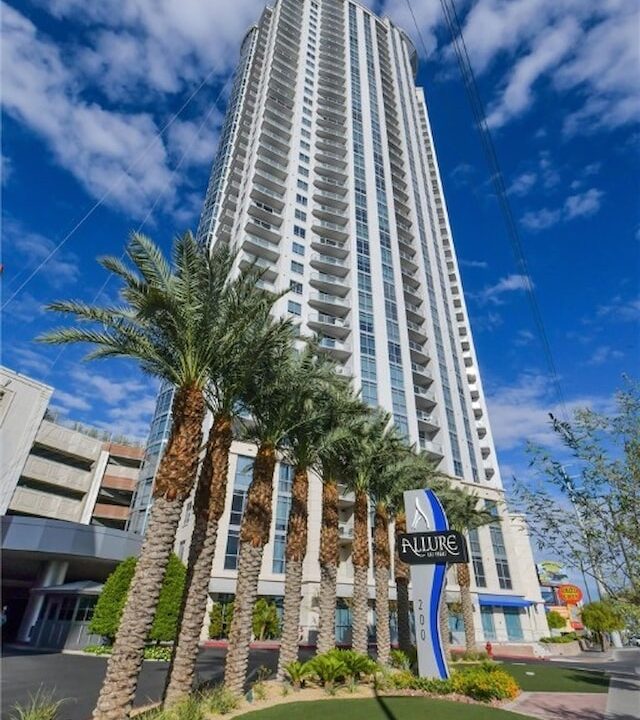- Sales: +1 385 334 4390Support: +1 801 396 2521
How to Maximize Your Energy Management Solutions
21 December 2021The Benefits of Providing Information Programming in Correctional Facilities
28 December 2021Finding the best internet service for your RV park may seem like a chore. Fortunately, you’ve come to the right place for learning about how RV parks can provide Wi-Fi to their customers.
Given that most RV parks are located in remote areas, you are likely to start by exploring your DSL, Cable, and fixed wireless options. Fiber optic internet is a go-to option if available.
At Groove Technology Solutions, we know that learning about different internet service providers can be overwhelming. Continue reading below to learn more about the advantages and disadvantages of each type of internet service. Included are vital statistics on the features that each provider has to offer. Also of utmost importance is that you head into the process of understanding how to deliver public Wi-Fi to an RV park so that you don’t get bogged down by a slow connection if you can avoid it.
What Is The Best Type Of Internet For RV Parks?
You will likely be able to choose between a few popular internet providers in your area. It is essential to ensure that you are buying an internet package with enough speed and security for your RV park patrons. You will notice that the list below includes business internet packages.
Why Should You Buy a Business Internet Package?
Business internet packages do offer several key advantages over residential internet. For one thing, a business internet comes with faster upload speeds. You’ll see exactly why this is important when it comes to providing your customers with Wi-Fi.
The other advantages of business internet packages include:
- Dedicated Service Lines: This means that you won’t be sharing your connection with neighbors or see slowed speeds during peak times of usage.
- Static IP Addresses: These provide more secure connections than the dynamic IP addresses seen in residential packages.
- Service Level Agreements (SLAs): You might be able to seek compensation if the provider does not meet the promised service level. In this way, you have more protections than a residential service package.
It’s important not to compromise on your internet service for your RV park. A Kampgrounds Of America (KOA) survey showed that respondents rank free Wi-Fi only second behind clean bathrooms when it comes to amenities they look for in RV parks/campgrounds. If you can provide Wi-Fi at your RV park, this could make a big difference for your business in the long run.
What Are The Best Internet Providers For RV Parks?
In the modern age, you certainly do have many different internet services available to you. Understanding each internet type’s pros and cons will ultimately help you connect with a provider who is most capable of delivering the desired features.
Fixed Wireless Broadband
Fixed wireless broadband is a type of internet that is transmitted by radio waves to a single location. When it comes to providing the internet to a remote location, this may be one of the best ways to get there. The installation process includes an outdoor antenna and an indoor wireless gateway.
Pros:
- Doesn’t require any trenching to install wires or cables
- Can reach locations that are “off the grid”
- Rapid connectivity
- Access to unlimited bandwidth
Cons:
- Trees and large buildings can cause signal interference
- Pricier than DSL
The hospitality industry has been turning to fixed-wireless internet solutions for about a decade now. This has helped hotel chains meet the increasing demand for reliable internet for their guests. At this point, the internet falls within the category of necessities. If it helps allow hotels to reach their bandwidth needs, it can certainly do much of the same for RV parks.
Is DSL Broadband Still Available?
You are probably familiar with DSL Broadband from the pioneering days of the internet. The service is transmitted to locations via the copper wire of telephone lines.
DSL internet is being phased out in favor of newer technologies, which is certainly understandable given the low speeds. In fact, in October 2020, AT&T announced that it would no longer be accepting orders for DSL. When it was still available, download speeds were capped out at only 6 Mbps.
There are still a few DSL packages available. In some rural areas, you may be limited to this option. Please be advised that this will not deliver the quality of more modernized options. However, having at least some access to the internet will undoubtedly be better than having no access.
Pros:
- It’s easy to install since it makes use of existing telephone wire
- Inexpensive
Cons:
- Speeds are slow
- The network is not overwhelmingly reliable
Fiber Optic Internet
Fiber optic cable is a relatively recent addition to the industry that is gradually replacing traditional cable internet, particularly in more populated areas. Rather than use metallic wires or signals to transmit data, fiber optic technology sends light signals carrying data via a special kind of fiber.
Pros
- The fastest type of internet available
- No caps or limits on bandwidth
- Can be scaled easily for a growing RV park
- Costs nearly the same as cable
- Offers improved internet security over traditional services
Cons
- Fiber optic cable is more sensitive to damage from construction, bending, or other accidents.
- You will need two fibers to both send and receive information.
- Not yet widely available.
If your park happens to be in a rural area, then it is not likely that you have access to fiber-optic cable yet. This is a technology that only recently has been implemented in metro areas.
How Do RV Parks Get Internet Access?
Designing an RV park that provides customers with free access to Wi-Fi can be a bit of a challenge. For one thing, there’s a good chance that your resort is located in a remote or semi-remote area. The terrain, trees, and RVs themselves may all act as obstructions.
To deliver Wi-Fi to staff and RV guests, you may need:
- Ethernet cabling
- Power-over-Ethernet switches
- Wireless Access Points
To provide Wi-Fi for all of your guests, you will need to consider how much bandwidth you are receiving from your provider. Your network also needs to be capable of supporting at least 2.5 devices per person.
You may also consider connecting with a service provider who can package some kind of a surveillance system with the internet service. This security service helps ensure that your RV park is safe from potential liabilities and theft.
Dual-Band Access Points
One way to improve the quality of Wi-Fi access at your RV park would be to install dual-band 11-ac access points. These devices deploy both 2.4 GHz and 5 GHz frequencies, thereby providing support for both older and newer electronic devices. These 11-ac access points should make it practical for guests to utilize internet streaming services from the comfort of their RV trailers.
You will need to find access points capable of withstanding weather conditions since they will need to be placed outdoors. Look for equipment with IP (Ingress Protection) ratings of IP55-IP68.
Creating Access Points: Hardwiring vs. Bridging
The best way to build access points for the Wi-Fi network is to hardwire every individual access point together. Unfortunately, it isn’t always realistic to install that many wires throughout an RV park, particularly if the RV park is relatively large.
A more realistic approach is to do what is called “bridging.” In this method, antennae are set up throughout the park with their own modems/routers connected to each of them. The unfortunate aspect of this is that the bandwidth decreases by 50% with each transmission between each access point.
Imagine that you are receiving 100 Mbps of bandwidth at the first modem:
- Access point 2: 50 Mbps
- Access point 3: 25 Mbps
- Access point 4: 12.5 Mbps
- Access point 5: 6.25 Mbps
- Access point 6: 3.125 Mbps
This problem can be solved in part by creating a multipoint mesh network. Each access point has 4-5 bridges sourcing back to it as an alternative to a point-to-point setup where you are losing 50% of your internet speed during each hop.
This also further highlights the need for an RV park to get the fastest bandwidth speed possible in their area. Speeds as high as 100 Mbps may not even be attainable in more remote areas. As such, RV parks may look for methods to preserve the bandwidth that they do have, such as restricting access to streaming services that eat up a lot of bandwidth and ruin the Wi-Fi speed for everyone else in the park.
What About Wi-Fi Extenders?
You may have heard of range extenders. These are devices that make the Wi-Fi signal stronger so that you may be able to pick up your signal a further distance from your router. The best place to put a range extender is not directly in front of your router but rather in a place where the signal can still be picked up.
Range extenders are generally not recommended for businesses, including RV parks. This is because they don’t support very many devices at once. Remember, the problem with the Wi-Fi at RV parks is not typically related to the signal. The primary issue tends to be the number of devices on the same network. This is a problem that a range extender is unable to solve.
Access points are capable of handling as many as 60 simultaneous connections for each unit, making them a handy tool for RV parks. Wireless access points also come with built-in security measures available, such as managing your network users.
What Equipment Is Required to Provide Wi-Fi at An RV Park?
Setting up a successful internet system in your RV park requires you to educate yourself on the equipment you’ll need to get the job done. It is an unfortunate reality that a provider may build you a system that doesn’t work that well.
Here are some examples of the type of equipment that is used to construct a network of wireless access points:
- NETGEAR Wi-Fi 6 Dual-Band AX1800
- Supports up to 250 devices
- Able to connect with 2.5G Ethernet Switch
- Built-in security
- TRENDnet Outdoor Wireless Point-To-Point Bridge Kit
- This pre-configured point-to-point bridge is designed to reduce installation and setup time.
- Riiai Wireless Bridge
- This point-to-point and multipoint wireless bridge operates at a 5G frequency. The equipment is rated for outdoor use.
How Do You Setup the Internet At An RV Park? Tip: Get Qualified Help
You need to be able to connect with a company that can give you a straightforward answer on all the materials you need. Selecting the provider is just one step of the process. As you have seen above, you must be able to start with a decent amount of speed (somewhere in the range of 50 Mbps and above) if you are going to be able to provide Wi-Fi access to every RV site.
This helpful packet illustrates a single campground deployment design that could also be applied to RV parks. You’ll notice that there is quite a bit of equipment needed for this type of project.
Groove Technology Solutions Can Help
There are five types of internet delivery that you may seek out if you are trying to provide Wi-Fi at your RV park. They are fixed wireless internet, DSL, cable, fiber optic, and satellite.
Either way, you should be looking for a business internet package from Groove Technology Solutions. This is because business internet comes with improved speeds over residential services. You are also looking for a package that doesn’t strictly limit the number of devices that can be connected to the network at the same time, as this will vastly reduce your capability to provide Wi-Fi to the entire park.
Our friendly, experienced technicians can help you with that. We’ve helped businesses across all 50 states, and we know we can transform your RV park. Get in touch with our experts today and see how our technology solutions can help your business.



